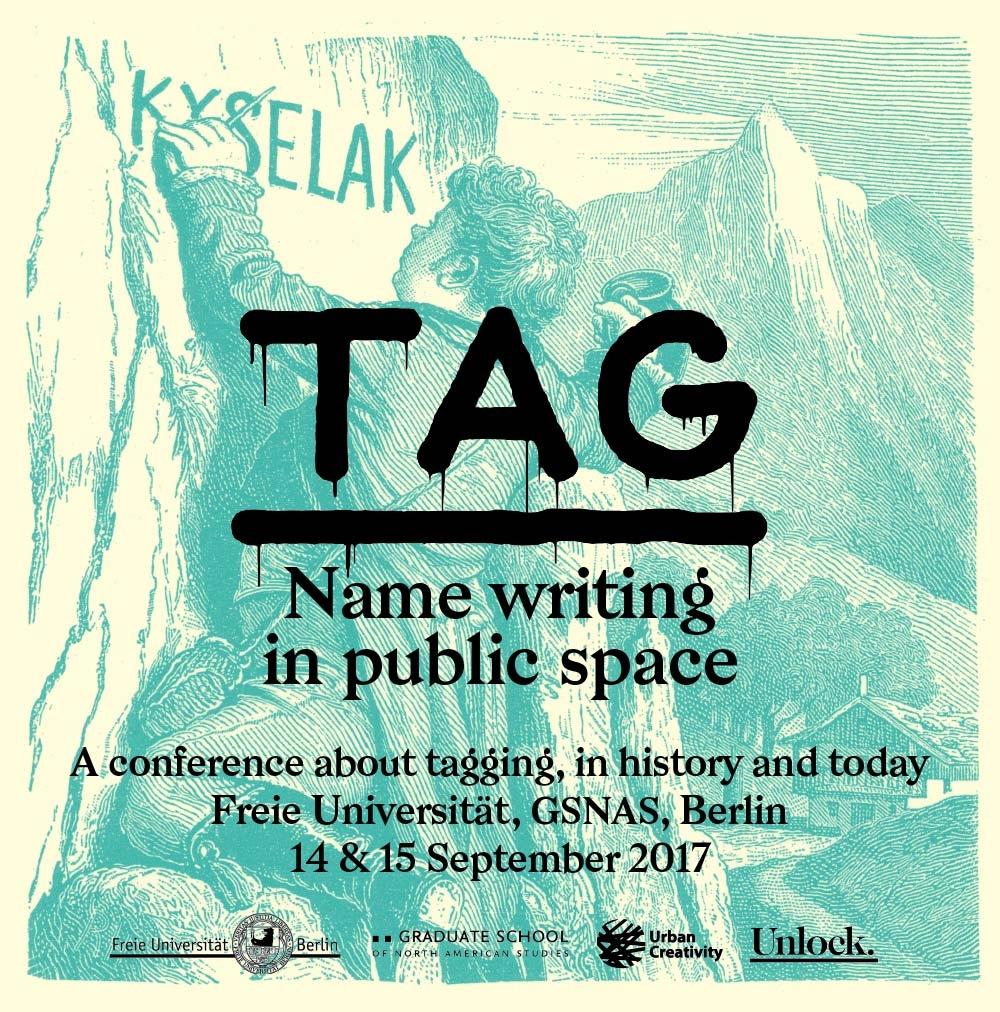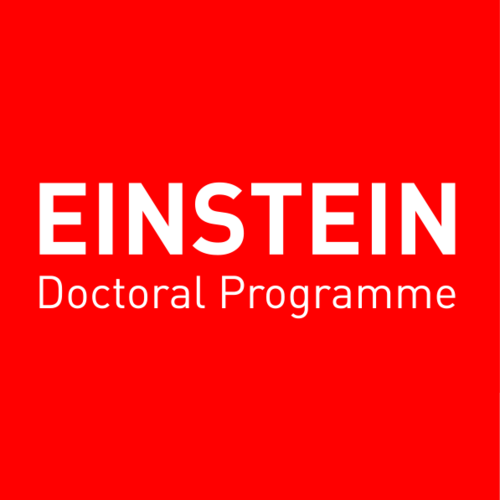The Tag Conference
TAG Conference Flyer
Image Credit: Illustration extracted from Die Reise des Herrn Kyselack, E. M. Vacano 1886.
TAG: name writing in public space
A conference about tagging, in history and today
14 & 15 September 2017
Freie Universität Berlin, GSNAS/JFKI
Lansstrasse 7-9, Berlin
Written signatures, or tags, are the central element of graffiti culture, and the most widely practiced form of public art. Yet tagging has rarely been the subject of serious examination. The Tag Conference is a first attempt to conceptually frame contemporary tagging, and to study it alongside its abundant but largely ignored historical antecedents.
The Tag Conference provides space for the discussion of a wide range of underexplored topics, such as the study of tagging as a form of calligraphy, tagging’s role as a device for understanding the environment, the history and folklore of past and present tagging cultures, and the relation of tagging with other forms of art in public space.
Informal name writing in public spaces is a time-honored practice, probably as old as writing itself. From children and anonymous laborers to famous authors, politicians or archaeologists, people of all kinds have felt the urge to mark their passing through a particular place and time by leaving a personal trace for other people to see.
This practice has played a particularly visible role in different points in history, such as Ancient Rome and Romantic Europe. It has served as a cartographic tool and as a way to keep track of people in unexplored landscapes. It has been used as a symbolic weapon in wars. And, in the last century, it has acquired unprecedented intensity and has become the central feature of several full-fledged folk cultures throughout the globe.
The most sophisticated of these cultures is the graffiti tradition that developed in the subways of New York City during the 1970s and has later become an expected part of the landscape of most cities worldwide. By influence of this tradition, name writing is today generally referred to with the slang term “tagging”.
The Tag Conference provides a space for discussion about tagging, about its nature, its meaning and its history, and about the diverse tagging traditions and cultures that exist and have existed. The conference is open to anthropologists, art historians, archaeologists, philosophers, geographers, urbanists, calligraphers, artists and other intellectuals with an interest in the field.
Entrance to the lectures is free. Please let us know if you plan on attending by sending a message to: tag2017@gsnas.fu-berlin.de
See the conference’s call for papers here.
Video screenings program
In addition to the lectures, Tag presents a program of documentary screenings featuring video-contributions to the conference and other films about name writing. The screenings program is produced in partnership with the Unlock Book Fair. See the full program here.
Time table
Thursday 14 September
9:00 Registration
9:30 Introduction
9:45 Javier Abarca (ES). Tags are culture
10:00 KEYNOTE Susan Phillips (US). The city beneath: excavating a century of Los Angeles graffiti
10:30 François Chastanet (FR). For a geography of urban signatures. New York globalisation & metropolitan particularities
11:00 Panel: Athens tags
– Julia Tulke (US). Names, Affects, Politics: Tags of the crisis in Athens
– Konstantina Drakopoulou and Argiro Papathanasiou (GR). The Hit and Lifo graffiti crews from Athens
– Orestis Pangalos (GR). Football, military and adolescent tagging in Greece
12:00 LUNCH
13:00 Vladimir Stekachyov (RU). Cleanliness is next to godliness
13:30 Panel: Tagging as marking of a sustained relation to a place
– Andreas Dorn (DE). Tagging in the Valley of the Kings around 1200-1150 BC.
– Danny Flynn et al (UK, MU, TR). Invasive tags, Île de la Passe
– Edwige Fusaro (FR).Taggings on classroom desks
– Valeria Federici (IT). The role of tags, between place and existence
14:45 Vitorio Parisi (IT). Tags as weapons of meaning(ful) destruction
15:15 COFFEE
15:30 Panel: Conservation and tradition
– Elena García Gayo and Carlota Santabárbara Morera (ES). Graffiti and the ethics of conservation
– Theo Kindynis (UK). Excavating ghosts: Urban exploration as graffiti archaeology
– Will Shank (US). To tag and to un-tag: the preservation point of view
16:30 Jakob Kimval (SE). Revisiting “Tag Town”
17:00 Carl Cattermole (UK). Sausage roll style and jail. Graffiti in London from 2000 until now
Friday 15 September
9:45 Edward Birzin (US). Taki 183 as Bildungsroman
10:15 KEYNOTE Rafael Schacter (UK). Adjunctive and decorative: graffiti as ornament
10:45 Gabriele Goffriller (AT). Joseph Kyselak (1798-1831). The world’s first graffiti tagger?
11:15 Panel: Pompeii
– Eeva-Maria Viitanen (FI). Public and private tags in Roman Pompeii
– Polly Lohmann (DE). Tagging in antiquity: Pompeian graffiti between individuality and convention
12:00 LUNCH
13:00 Pedro Soares (PT). Tagging 22000 years ago
13:30 Detlev Kraack (DE). Tagging 500 years ago: the heraldic graffiti of later medieval noble travellers
14:00 Panel: Eastern calligraphy
– Norbert Kirbach (DE). Tagging and chinese calligraphy
– Jake Carter (AU). Between inscription & gesture
– Kadir “Amigo” Memis (DE). Movement of letters
15:00 COFFEE
15:20 Carlo McCormick (US). Identifying lines: tagging, literary squiggles and the fine art of branding
15:50 Panel: Other taggings
– Jo Preußler (DE). Skywriting
– Lukas Fuchsgruber (DE). The curious case of glass tagging. Towards a history and theory of scratchings
– Jean-Baptiste Barr and Timothée Engasser (FR). Marks of erasure: a visual and sociological approach to anti-graffiti policies
16:45 Tomasz Sikorski (PL). Illegal signs and names in public space in Poland: three stories from 1942, 1965 and 1989
17:15 Conclusions
Executive committee
Edward Birzin – JFK Institute, Freie Universität
Javier Abarca – independent researcher
.







